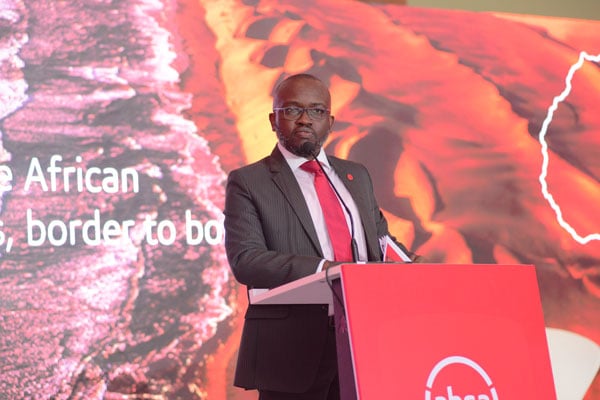World Bank counts on tourism, exports to revive Uganda’s GDP

Tourists watch a gorilla in Bwindi Impenetrable National Park.
What you need to know:
- The World Bank also says disinflation is expected to boost the recovery of firm employment and real household income.
The World Bank has said in its 22nd Economic Update for Uganda that the country’s real GDP growth should return to its long-term trend of 6.5 percent and above.
The World Bank is basing its optimistic outlook for the country on a resurgent tourism sector, export diversification, and agro-industrialisation.
The World Bank also says disinflation is expected to boost the recovery of firm employment and real household income, with high commodity prices expected to bolster the income of cash-crop-producing agricultural households.
“However, the continued growth of non-farm income and declining inflation are expected to boost consumption, and accelerated growth could reduce the poverty rate; measured at $2.15 per person per day, from 41.7 percent in 2023 to 40.7 percent by 2024,” says the World Bank.
“However, given the limited capacity of Ugandan households to cope with shocks, the pace of poverty reduction will ultimately depend on the evolution of food access and affordability, as well as weather conditions,” it adds.
The World Bank also says the annual real GDP growth rate is projected to rise to about 6 percent during the Financial Year 2024, marginally below the forecast in the June 2023 edition of the Uganda Economic Update, reflecting lower than-anticipated outturns in the Financial Year 2023.
The World Bank says building on its resilience to several recent shocks—including high commodity prices, disrupted global supply chains, tighter global financial markets, and policy uncertainty—the Ugandan economy is expected to continue growing at a robust pace, thereby narrowing the output gap.

The oil rig during the assembling process at Kingfisher oil field in November 2022. The sustained push to start oil production by 2025 has seen more investment in oil-related infrastructure. PHOTO/COURTESY OF CNOOC.
Oil impact
The sustained push to start oil production by 2025 has accelerated the construction of about $20 billion in oil-related infrastructure. However, other private investments are expected to be constrained by the difficult economic environment, especially liquidity constraints underpinned by relatively tight monetary policies and the ongoing fiscal consolidation, the uncertainty caused by the conflict in the Middle East, and adverse weather conditions,” says the World Bank.
The World Bank states that public investment is also expected to decelerate in line with the fiscal consolidation. Nevertheless, the recent oil-driven surge in private investment is expected to offset the negative impact of these shocks.
Uganda’s recovery is expected to continue in the medium term, though risks to the outlook include a global economic slowdown, worsening conditions in global financial markets, and additional weather-related shocks.
The World Bank says the country’s medium-term prospects hinge on the continued rebound of tourism activity and the further development of the oil sector, which is attracting foreign investment and is forecast to reach 11 percent of GDP by the Financial Year 2025.
But it cautioned that medium-term growth also depends on domestic private investment in oil-related infrastructure ahead of the start of oil production in 2025, as well as the economic impact of oil production itself. Lower inflationary expectations could also prompt the Bank of Uganda to ease monetary policy.
Summary, recommendations
The World Bank says Uganda’s economy has weathered multiple shocks, but the prospect of accelerating growth into the medium term is fragile. Adverse weather-related shocks and commodity prices threaten livelihoods and living standards and could reverse progress on poverty reduction.
It warns that government interventions are likely to be constrained by limited fiscal space due to revenue shortfalls, project execution challenges, and rising public debt vulnerabilities. In line with the analysis above, attention to the following four priority areas is required to sustain a resilient and inclusive recovery.
“First, the fiscal adjustment should ring-fence public investment and human capital spending. In addition to raising revenues and rationalising spending, especially recurrent expenditures, the government must use the capital budget more efficiently by deepening reforms to public investment management,” says the World Bank.

Uganda’s Robusta coffee on display. The World Bank says export diversification will revive the economy this year.
On execution of projects
It explains that in particular, the authorities should ensure that projects have sufficient resources for their execution. Increasing public investment in education, health and social protection is critical to support inclusive growth and poverty reduction, as detailed in the special focus section of this edition of the Uganda Economic Update.
The government should boost spending in these areas while avoiding recourse to domestic financing of the deficit, which would increase the exposure of the domestic financial system to macro-fiscal risks, or to the renewed accumulation of domestic arrears, which would harm the private sector. Instead, the authorities should focus on rationalising expenditures while tapping additional sources of concessional financing. Second, monetary policy should be more closely coordinated with fiscal policy. Harmonising monetary and fiscal policy would help ensure a less painful adjustment of inflationary expectations and pressure while supporting private-sector growth. Increased net lending to the government through bank advances and/or the nonpayment of matured securities would reduce budgetary flexibility and narrow the fiscal space to respond to shocks.
Thirdly, the World Bank says a combination of macroeconomic and structural policies would be necessary to prevent Dutch disease by increasing productivity and diversifying the economy. The structural external current account deficit is likely to persist as import growth continues to outpace export growth in the short-to-medium term. The government will need to avoid exchange-rate misalignments, especially as the capital flows generated by the oil sector intensify, while investing heavily in the non-oil economy to enhance productivity and boost export growth.
RECOMMENDATIONS
Finally, the World Bank says to counter more frequent and intense shocks, the government needs to adopt well-targeted interventions that effectively support vulnerable households.
The government should accelerate the creation of a national social registry of vulnerable households to enable public agencies to respond quickly and expand support beyond current beneficiaries of social assistance programmes.
“Strengthening and expanding the digital payment systems would allow for the efficient and transparent distribution of support to affected households. Developing a disaster-risk financing strategy will be crucial to strengthen the country’s financial resilience to disasters and facilitate a timely response,” says the World Bank.
It adds: “Poor and vulnerable households can be supported through labor-intensive public works and livelihoods programmes designed to reduce negative coping strategies such as reducing food intake, selling productive assets, and pulling children out of school. In the longer term, these programmes can help households increase income, build assets, and develop resilience.”




